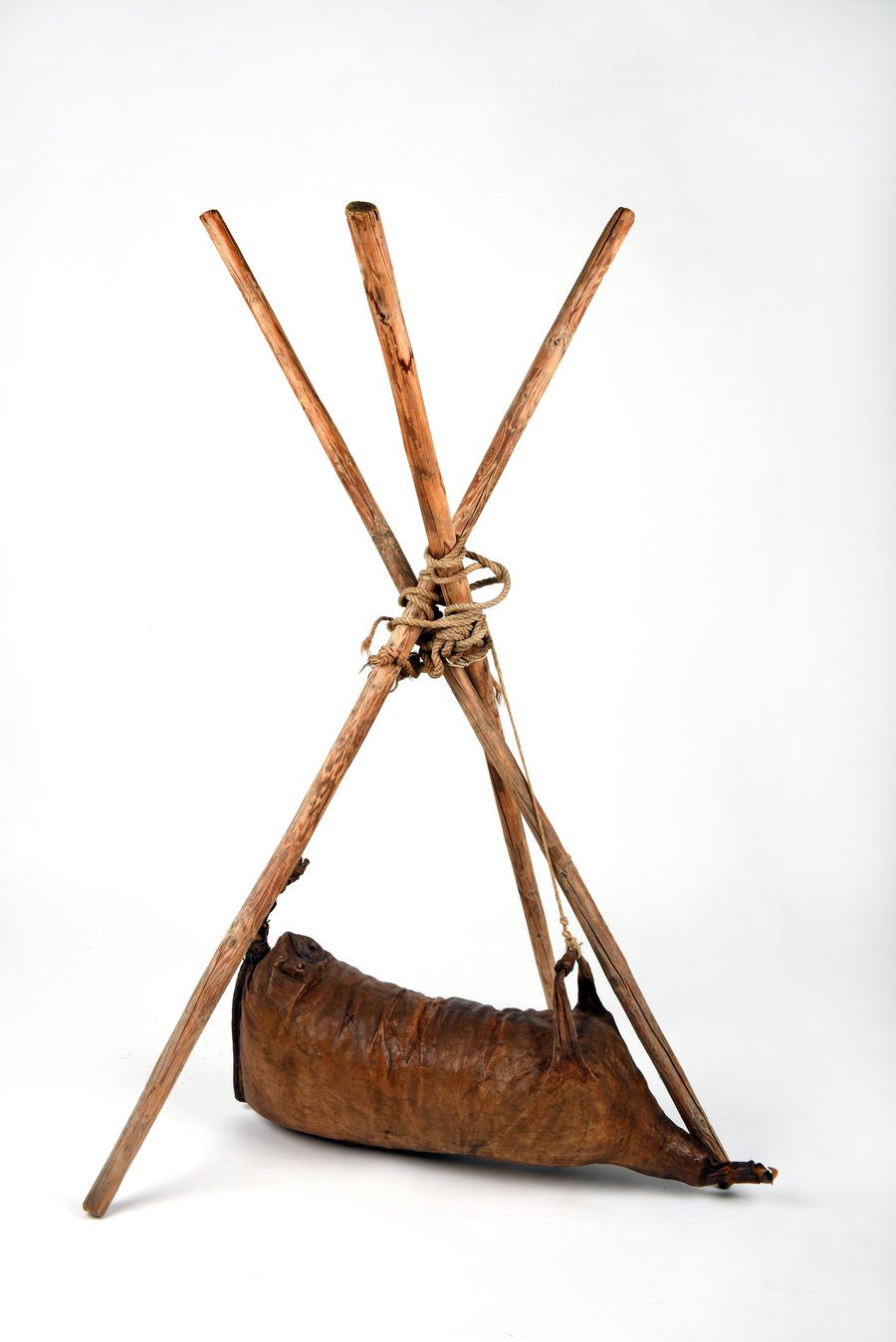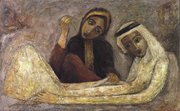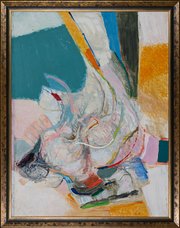
Milk churn (Isga)
National Museum of Qatar
- Title:
- Milk churn (Isga)
- Production place:
- Arabian Peninsula
- Date:
- 1800 - 1999
- Period:
- 19th century CE
- Title:
- Milk churn (Isga)
- Production place:
- Arabian Peninsula
- Date:
- 1800 - 1999
- Period:
- 19th century CE
- Material:
- Wood, Leather, Cord
- Technique:
- Hand building
- Dimensions:
- 137.5 × 79 × 91
Containers such as this milk churn were typically made from goatskin and stitched shut at the bottom with a thick strip of, often embroidered, leather. A long, waxed cord would suspend the bag from a tripod or a tree branch, which would allow the bag to be rocked backwards and forwards during the churning process. This was performed in the morning together by two women. When the Qatari people were on the move, the containers would hang from the sides of camels. Similar containers were used to store and carry water, goat and camel milk.
Diet in the desert depended greatly on milk and milk products such as buttermilk, cheese and ghee, providing a rich source of calcium as well as filling, nutritious meals. Goat milk was used in numerous ways. After being boiled and left in a shaded area to sour for five to six hours, it was then poured into the skin and churned for up to an hour. Two things were formed: first, leben (buttermilk), which was consumed regularly on its own or boiled again to form yegert (fresh cheese), usually eaten with crushed dates; and second, small chunks of butter, which were formed and collected by hand. When butter was heated, somn (ghee) was formed and then placed in small leather containers made from rabbit skin.



